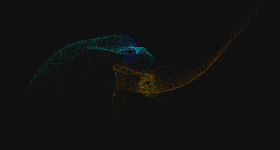
Two galaxies colliding. Each one (blue and orange) has 5,000 stars. |
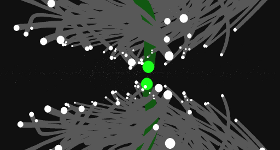
The paths of two planets and 200 moons on a collision course. |
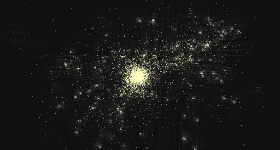
A Barnes-Hut globular cluster. Brighter areas have more stars close together.
|
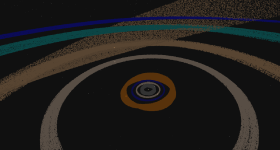
The paths of the Solar System's planets
(and Pluto) over several thousand years. |
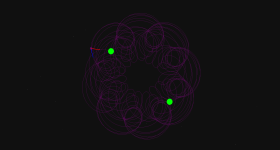
A satellite orbiting two Earths as they
orbit each other. The purple
line shows the satellite's path. |
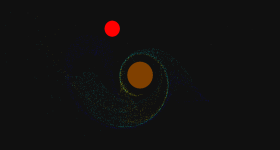
A small planet passing by a larger ringed planet, scattering the rings
with its gravity.
|
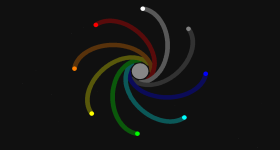
Rainbow moons symmetrically orbiting a planet, leaving color-coded
trails. |
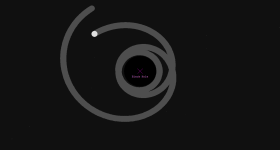
A moon orbiting a black hole; its orbit
warps dramatically in the strongly curved space. |